In the realm of graphic design, grunge graphic design history stands out as a movement that challenged tradition, celebrated imperfections, and echoed the rebellious spirit of an era.
This expressive and unconventional design movement emerged during the 1990s, embodying the essence of chaos, raw expression, and nonconformity. Its recognized by its gritty, weathered, and unpredictable nature that challenged the polished aesthetics of the time.
Origins of Grunge Graphic Design
The origins of grunge design can be traced back to the rise of the grunge music movement in the early 1990s.
Bands like Nirvana and Soundgarden were popular in the music scene due to their raw, punk music. Designers saw this and started to imitate the rebellious nature of grunge music and began infusing their designs with a similar style.
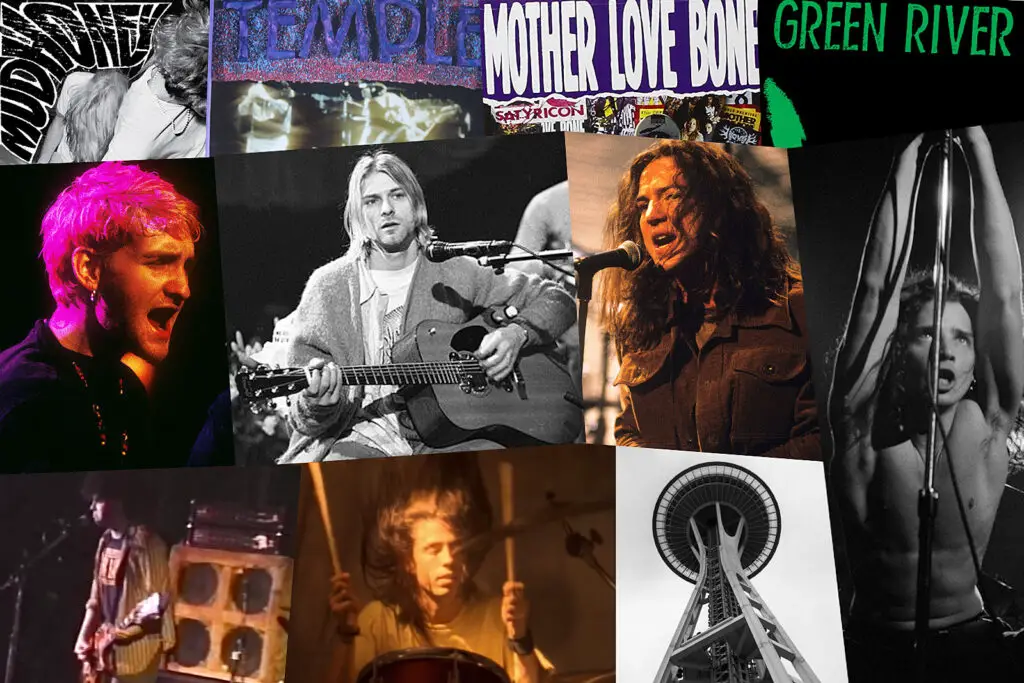
This style, characterized by its distressed textures, moody color palettes, and unconventional typography, emerged as a counterpoint to the sleek and polished designs of preceding eras like Art Nouveau.
Grunge design was more than just a visual style; it was a cultural statement, rejecting conformity and embracing imperfection.
This unique and rebellious approach to graphic design makes the movement similar to previous design movements like Bauhaus, Futurism, and Pop Art. These also rejected traditional design principles and founded new techniques for their designs.
David Carson: Pioneering Grunge Typography

The Iconic Visionary
Amidst the chaos of the grunge design revolution stood a luminary figure – David Carson.
Carson wasn’t just a designer; he was a maestro conducting an avant-garde symphony in the world of graphic design. His name became synonymous with the unconventional, the daring, and the utterly unique.
An Unconventional Path
Carson’s journey to becoming a design icon was far from traditional. Surprisingly, his initial career path didn’t revolve around design studios or art schools.
Armed with a sociology degree, Carson initially pursued teaching while carving his path as a professional surfer. It was this unconventional background that laid the foundation for his extraordinary vision in design.
Surfing wasn’t just a hobby for Carson; it became an integral part of his design DNA. It fueled his motivation and steered his success in directing and designing various magazines, websites, and advertisements for notable brands within the surfing, snowboarding, and skateboarding realms.
Carson’s Impact
It was Carson’s innovative work, especially his typographic designs and art direction for Ray Gun magazine, that elevated him to the pinnacle of the design world.
Ray Gun was not just a publication; it was an embodiment of Carson’s revolutionary design philosophy. It was here that Carson’s designs became iconic and inspired designers worldwide.
Key Characteristics of Grunge Graphic Design
Distressed Textures: Embracing Imperfections
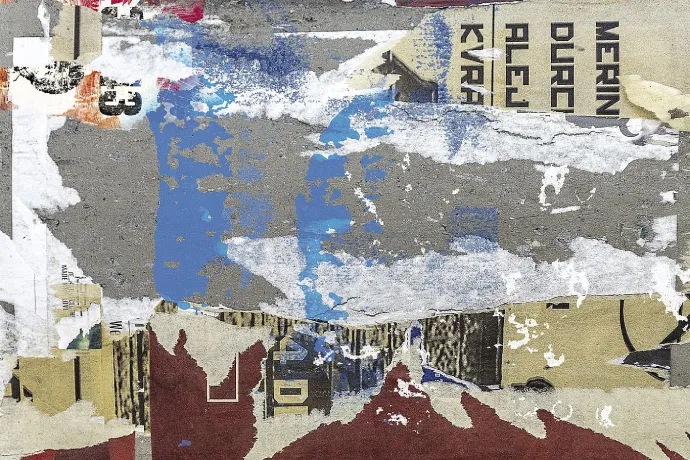
Grunge design thrives on imperfect designs. It’s a canvas adorned with distressed textures – torn paper, ink splatters, and weathered surfaces. These elements add depth and history to the composition, a visual echo of raw authenticity.
Dark and Moody Color Palette: Evoking Nostalgia
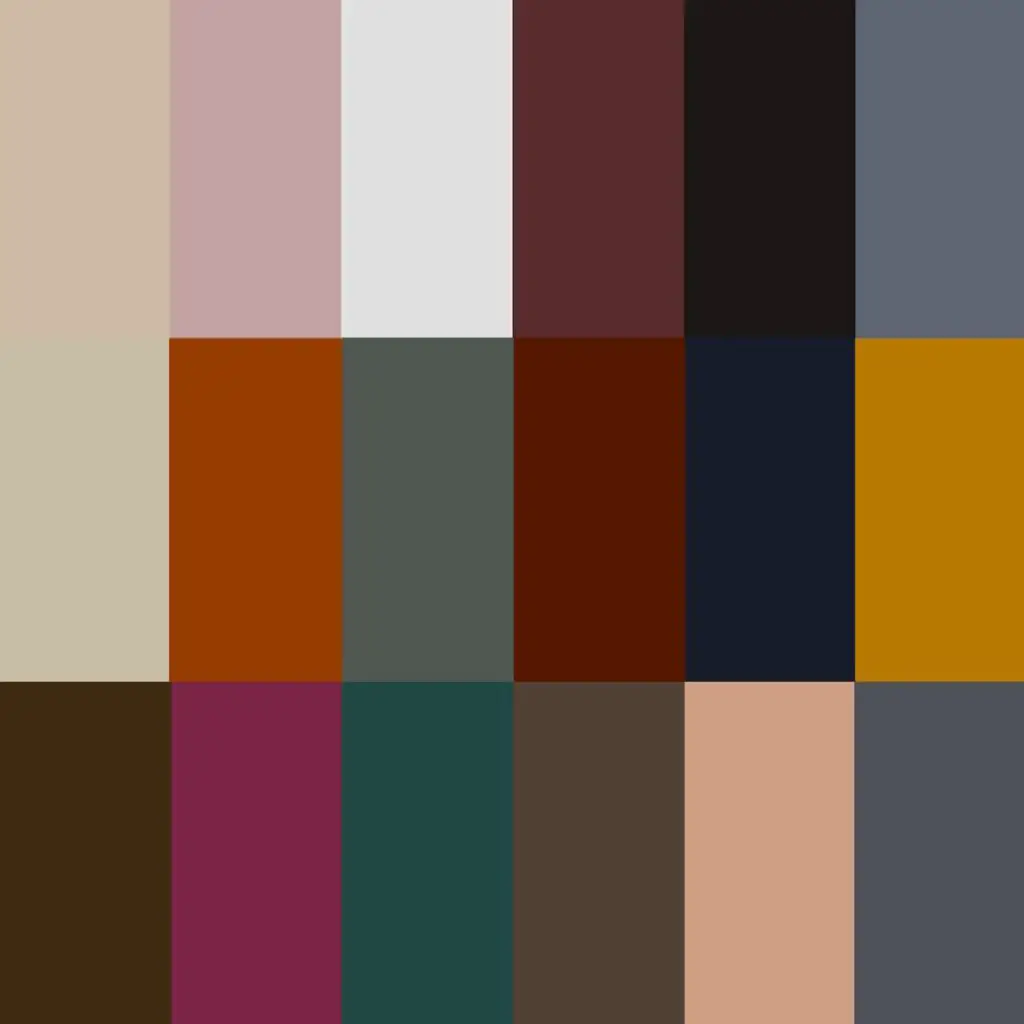
The color palette of grunge design mirrors its rebellious essence. Muted shades of browns, greys, and deep earthy tones dominate, evoking a sense of nostalgia and vintage appeal that reinforces its raw and moody vibe.
Layering and Collage Techniques: Chaos in Harmony
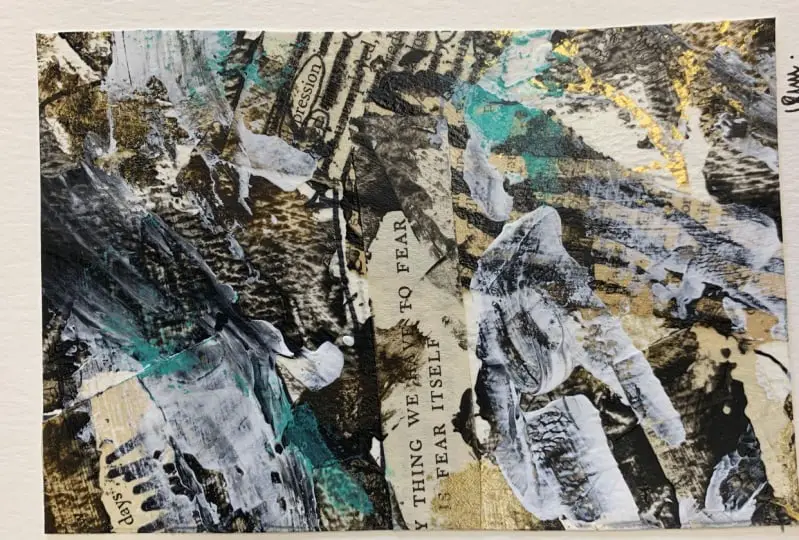
Grunge design defies simplicity. It revels in layering, overlapping images, and collage elements. This technique creates a chaotic yet harmonious visual narrative, intensifying the rebellious nature of the style.
Handwritten and Irregular Typography: An Artistic Quirk
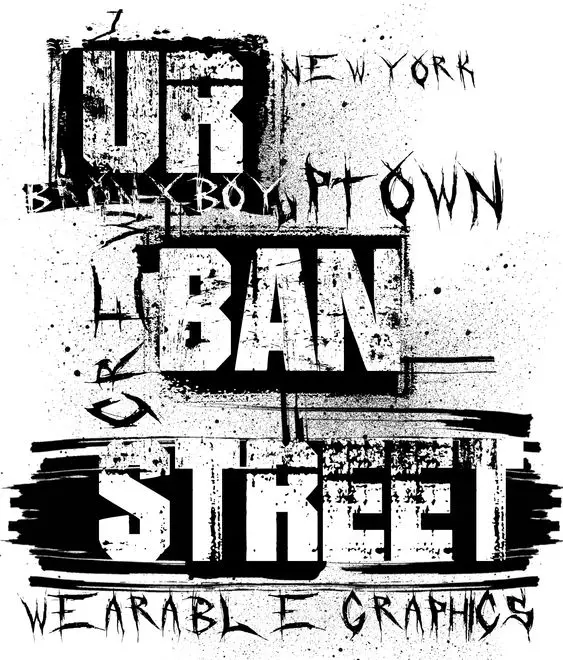
The typography in grunge design boasts a hand-drawn, irregular quality. It deviates from the precise typefaces of traditional design, adding an authentic, DIY feel that complements the chaotic spirit of the movement.
Impact Beyond the 90s: Grunge’s Everlasting Influence
Grunge design didn’t merely fade away with the turn of the millennium; its rebelliousness continues to echo through the corridors of contemporary graphic design.
A Timeless Resurgence
The rebellious spirit of grunge didn’t confine itself to the 90s; instead, it left an indelible mark, shaping the evolution of design beyond its era.
Its resurgence in modern design trends showcases its enduring appeal. Designers, inspired by nostalgia and authenticity, continue to embrace grunge elements, infusing their creations with a raw, vintage charm.
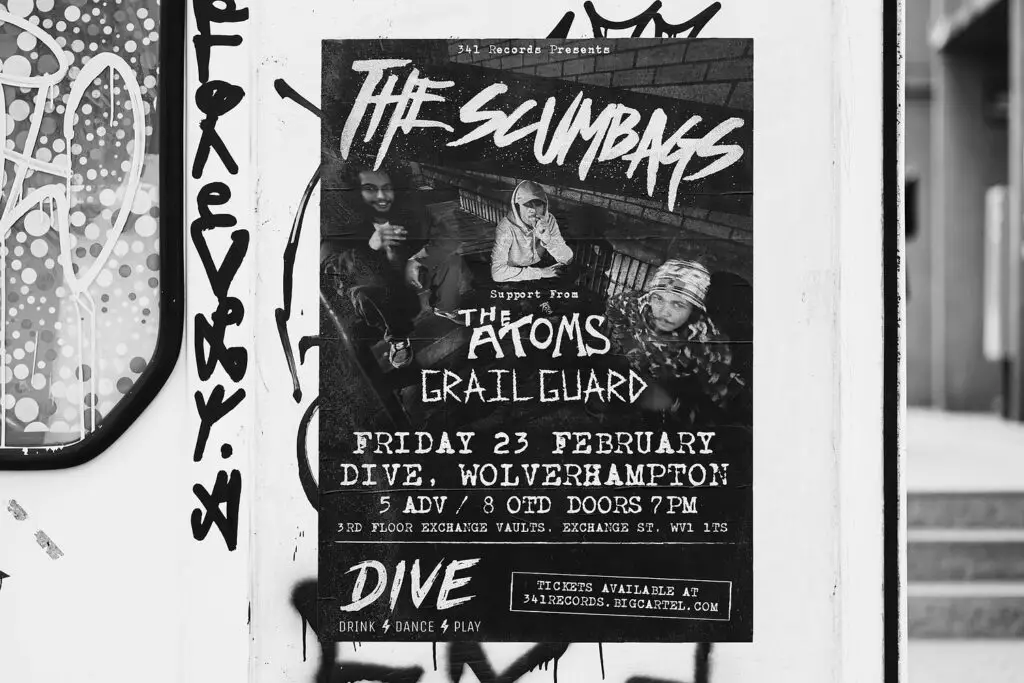
Modern Graphic Design Applications
Grunge’s revival isn’t a mere replication of past aesthetics; it’s a reinvention that blends vintage elements with modern techniques. From posters and album covers to websites and social media graphics, grunge elements find their way into diverse design projects.
The mixture of grunge’s rawness with contemporary design principles produces visually striking compositions that resonate with modern audiences.
Showcasing Diversity in Graphic Design
Examples abound in showcasing the incorporation of grunge elements into contemporary designs. Posters adorned with distressed textures, websites featuring handwritten irregular typography, or social media graphics employing moody color palettes – these manifestations exhibit the versatility of grunge’s influence across various design platforms.
Unveiling Carson’s Unparalleled Legacy
Ray Gun Magazine: A Design Revolution
David Carson’s indelible mark in the design sphere shines brightest through his groundbreaking work in Ray Gun magazine. His experimental typographic designs and art direction within its pages rewrote the rules of graphic design.
Carson’s designs in Ray Gun were not mere layouts; they were an insurgence against conformity, a visual symphony of chaos and innovation.
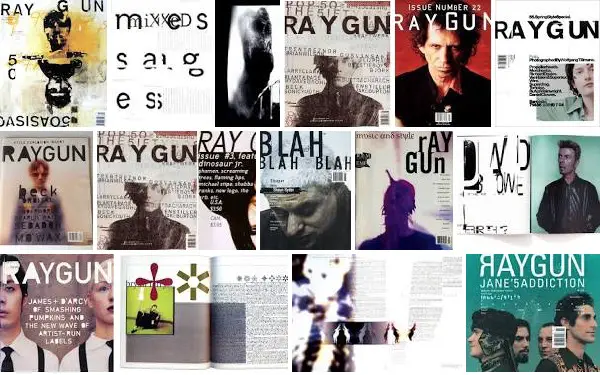
The Book of Probes: A Fusion of Words and Images
Another testament to Carson’s visionary approach was “The Book of Probes.” This collaboration with Marshall McLuhan brought forth a stunning fusion of McLuhan’s probes with Carson’s expressive imagery.
Each page was a canvas where McLuhan’s words danced harmoniously with Carson’s visuals, creating a reciprocal tension that captivated the audience.
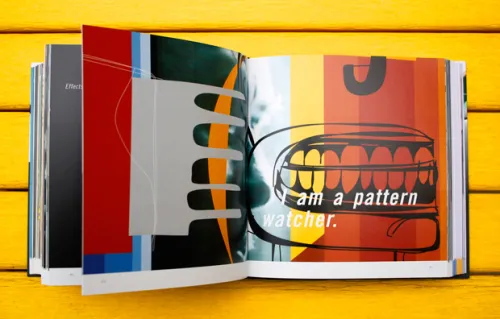
Carson’s works weren’t just designs; they were movements that challenged the conventions of visual communication, pushing the boundaries of artistry and creativity.
Grunge Graphic Design’s Journey: Evolution and Enduring Influence
Grunge design, born in the 90s as an emblem of rebellion, has undergone a remarkable evolution. While its heyday might be a memory, its spirit thrives in today’s design culture. This evolution isn’t about replication but adaptation, as designers continue to infuse grunge’s raw authenticity into modern aesthetics.
The legacy of grunge in the graphic design industry remains supreme. Its bold departure from conventional norms left an unforgettable mark, challenging the established notions of aesthetics and paving the way for unconventional expression.
While trends come and go, grunge’s legacy endures as a testament to the power of rebellion and authenticity in design.
Influence on Modern Design Movements
Grunge’s influence reverberates through modern design movements, shaping emerging trends and ideologies. Its impact on modern graphic design serves as a catalyst for designers to embrace imperfections, experiment with unconventional elements, and infuse raw authenticity into their creations.
Grunge design might have traversed decades, but its legacy continues to shape the very fabric of contemporary design, inspiring designers to push boundaries and challenge the status quo.
Conclusion – Embracing Grunge Graphic Design History
From its tumultuous inception in the 1990s to its enduring impact on contemporary design, the journey of grunge graphic design stands as a testament to rebellion, raw authenticity, and unbridled creativity.
- Evolution Unveiled: Grunge design, with its distressed textures, moody palettes, and unconventional typography, emerged as a radical departure from the clean-cut norms, evolving into a timeless aesthetic that continues to captivate.
- A Resounding Legacy: Its legacy, etched into the annals of design history, remains vibrant. The audacious spirit of grunge fuels modern-day creativity, inspiring designers to infuse their work with a raw, unfiltered charm.
- Continued Relevance: In an ever-evolving design landscape, grunge’s influence remains palpable, weaving its way through contemporary design movements, and encouraging a constant exploration of unconventional elements.
As we conclude this journey through the history and impact of grunge graphic design, let’s embrace its enduring essence. Let’s dare to experiment, challenge norms, and infuse our designs with the unfiltered, rebellious spirit that defines grunge.
Let grunge not be confined to a bygone era but be a guiding light, inspiring us to push boundaries and create boldly.